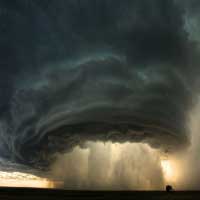Why there’s no housing bubble…yet Tight inven
Post# of 103146

Tight inventory, pent-up demand and investors supporting demand
WASHINGTON (MarketWatch) — As home prices rise, so are concerns that a new housing-market bubble may be appearing, particularly in cities with double-digit annual growth rates.
Are there red flags in recent data?
“I wouldn’t say that we have bubbles today. But if prices keep rising at these rates, pretty soon you will be in bubble territory,” said Dean Baker, co-director of the Center for Economic and Policy Research, a Washington think tank. “Generally, you don’t see situations with rapidly rising prices and they just stop.”
Before the bubble burst, year-over-year price growth reached above 17%. The current rebound has yet to reach such a frenzied pace, though home prices recently posted year-over-year growth of 12%, the fastest rate since 2006, according to the Case-Shiller index that tracks 20 cities.
Many of the cities with the largest price gains are where housing crashed hardest when the bubble burst. For example, Las Vegas home prices recently posted year-over-year growth of 22%, but (as seen in the chart) remain more than 50% below a 2006 peak, according to the most recent S&P/Case-Shiller report. Prices in both Phoenix and Miami also more than 40% below local peak levels in those cities, despite recent jumps higher.
“What’s important to keep in context is that those double-digit gains are off of very low prices. Even with those gains prices are still relatively low,” said Frank Nothaft, chief economist at federally controlled mortgage buyer Freddie Mac (OBB:FMCC) .
Tight inventory, pent-up demand and investors have supported price gains. Despite those gains, prices are 26% below peak levels, according to Case-Shiller’s 20-city composite index. Take San Francisco, for example, where inventory is lean and competition is fierce between would-be buyers. Among the 20 cities tracked by the Case-Shiller index, San Francisco recently posted the fastest year-over-year growth, hitting just under 24%. Yet even there prices are 26% below peak. http://www.marketwatch.com/story/why-theres-n...beforebell
 (0)
(0) (0)
(0)